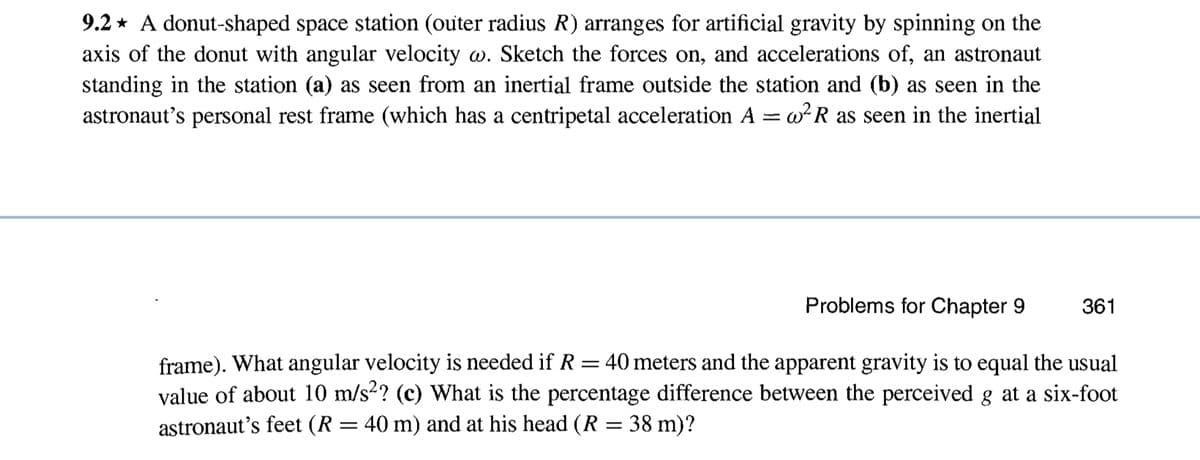9.2 A donut-shaped space station (outer radius R) arranges for artificial gravity by spinning on the axis of the donut with angular velocity w. Sketch the forces on, and accelerations of, an astronaut standing in the station (a) as seen from an inertial frame outside the station and (b) as seen in the astronaut's personal rest frame (which has a centripetal acceleration A = w²R as seen in the inertial Problems for Chapter 9 361 frame). What angular velocity is needed if R = 40 meters and the apparent gravity is to equal the usual value of about 10 m/s²? (c) What is the percentage difference between the perceived g at a six-foot astronaut's feet (R = 40 m) and at his head (R = 38 m)?
Rigid Body
A rigid body is an object which does not change its shape or undergo any significant deformation due to an external force or movement. Mathematically speaking, the distance between any two points inside the body doesn't change in any situation.
Rigid Body Dynamics
Rigid bodies are defined as inelastic shapes with negligible deformation, giving them an unchanging center of mass. It is also generally assumed that the mass of a rigid body is uniformly distributed. This property of rigid bodies comes in handy when we deal with concepts like momentum, angular momentum, force and torque. The study of these properties – viz., force, torque, momentum, and angular momentum – of a rigid body, is collectively known as rigid body dynamics (RBD).

Trending now
This is a popular solution!
Step by step
Solved in 5 steps with 5 images




